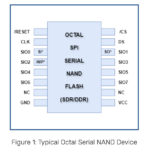You are currently viewing SemiWiki as a guest which gives you limited access to the site. To view blog comments and experience other SemiWiki features you must be a registered member. Registration is fast, simple, and absolutely free so please,
join our community today!
WP_Term Object
(
[term_id] => 95
[name] => Automotive
[slug] => automotive
[term_group] => 0
[term_taxonomy_id] => 95
[taxonomy] => category
[description] =>
[parent] => 0
[count] => 773
[filter] => raw
[cat_ID] => 95
[category_count] => 773
[category_description] =>
[cat_name] => Automotive
[category_nicename] => automotive
[category_parent] => 0
[is_post] =>
)
Dan is joined by Amol Borkar, Product Marketing Director at Cadence. Since joining in 2018 as a senior product manager, he has led the development of many successful hardware and software products, including Tensilica’s latest Vision 331 and Vision 341 DSPs and 4DR accelerator targeted for various vision, automotive and AI edge… Read More
As electric vehicles (EVs) gain widespread adoption, safety, reliability, and efficiency are becoming increasingly important. A crucial component in ensuring these aspects is the power module (PM), which manages the energy flow between the EV battery and the motor. The design of these power modules must not only meet the high-performance… Read More
Silicon Carbide (SiC) is the superhero EV converters need, boosting efficiency, shrinking component sizes, and letting your car charge faster while handling heat like a pro. Even Tesla’s like, “Yep, we’re using it,” because who doesn’t want more range and less sweating under the hood?
By Jerome Fohet
Get ready for… Read More
How do you measure safety for a DNN? There is no obvious way to screen for a subset of safety-critical nodes in the systolic array at the heart of DNNs. Paul Cunningham (GM, Verification at Cadence), Raúl Camposano (Silicon Catalyst, entrepreneur, former Synopsys CTO and now Silvaco CTO) and I continue our series on research ideas.… Read More
As the demand for higher performance computing solutions grows, so does the need for faster, more efficient data communication between components in complex multi-die system-on-chip (SoC) designs. In response to these needs, Synopsys has introduced the world’s fastest UCIe-based IP solution, capable of operating at a groundbreaking… Read More
Even for experienced technologists some technologies can seem almost indistinguishable from magic. One example is the bird’s eye camera view available on your car’s infotainment screen. This view appears to be taken from a camera hovering tens of feet above your car. As an aid to parallel parking, it’s a brilliant invention; … Read More
I posted a blog on this topic a year ago. Now the Bluetooth Sig has (just) ratified the standard it is timely to provide a reminder on what this new capability can offer. Channel Sounding introduced in Bluetooth Core specification version 6.0 is a method to significantly increase the accuracy of Bluetooth-based distance measurements,… Read More
As the automotive industry continues to evolve, the demands for high-capacity, high-speed storage solutions are intensifying. Autonomous vehicles and V2X (Vehicle-to-Everything) communication systems generate and process massive amounts of data, necessitating advanced storage technologies capable of meeting these… Read More
Now that live events are filling up there are even more live events especially here in Silicon Valley. Synopsys, the #1 full IP provider, will host a processor summit here in Santa Clara next month. Given the popularity of anything RISC-V, I would expect this event to be very well attended so be sure and register in advance.
The networking… Read More
At #61DAC it was quite clear that semiconductors have “grown up”. The technology has taken its place in the world as a mission-critical enabler for a growing list of industries and applications. Reliability and stability become very important as this change progresses. An error of failure is somewhere between inconvenient… Read More










The Quantum Threat: Why Industrial Control Systems Must Be Ready and How PQShield Is Leading the Defense